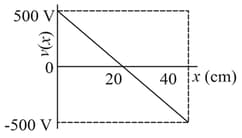You are to bring two charges from infinity to the points represented by the potentials and in an electric field . If the distance between within the field is , find the total work done in assembling the configuration. Imagine an electric field in a space. The potential at the origin is zero. Find the potential at the point .
Important Questions on Electrostatics
The electric potential at a point at a distance of from a point charge of is . The electric field at this point will be _____.
The figure gives the electric potential as a function of distance through four regions on -axis. Which of the following is true for the magnitude of the electric field in these regions?
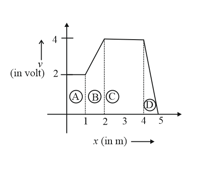
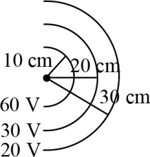
An imaginary equilateral triangle of side length is placed in a uniform electric field as shown. Then.
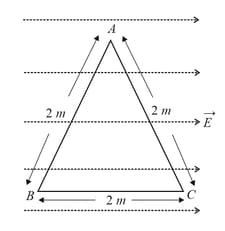
The electric field intensity at a distance from the origin varies as
Figure shows three points and in a region of uniform electric Field . The line is perpendicular and is parallel to the field lines. Then which of the following hold good? ( and represent the electric potential at points and respectively )
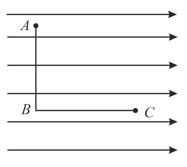
As shown in the figure below, a point charge moves from point to a point traversing a path in a uniform The electric field is directed along a direction parallel to -axis. The coordinates of, and are and respectively. What is the work done by the field in the process?
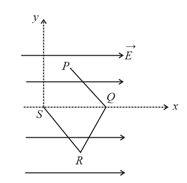
An electron is placed on -axis where the electric potential depends on as shown in figures (the potential does not depend on and ). What is the electric force on the electron?
